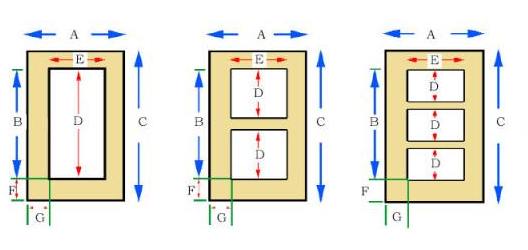|
Chimney Cap Measuring
for single, double & multi flue chimney caps
made easy.....
Lets climb that ladder
once..... measure "everything" twice.
 |
|
Always measure a flue side to
side, never corner to corner.
The flue "D" may be square, rectangular or
round. Measure accordingly.
Measure everything....
Provide the inner and outer "D" measurement
to size other options such as top sealing dampers.
Measure the gap, if any, between the flues
"D". If the gap is wide enough single caps may be used instead
of double or multi flue caps. |
|
 |
|
A & C.
Measure to the outer most point on each side of the overall chimney's
top. The chimney's cement "crown".
B & E.
Measure the span or outer most point of each flue or group of flues.
F & G.
Measure from the outer most flue in the group to
each edge of the chimney.
H.
Measure the height of the flue or highest flue in the group.
Flue
Liner -- Usually a high temperature clay (fireclay). A round,
square or rectangular sleeve lining the interior of masonry chimneys.
This is the pathway in which the "smoke" or flue gases pass through to
exit into the atmosphere.
(Some chimney were constructed with no clay liner or metal pipe was used
as the flue pipe.)
**Always measure a flue side to side, never corner
to corner.
Chimney Crown --
Also called a "wash"... is usually a cement topping around the flues and
tapered to the chimneys sides to shed water.
(Some crowns are tapered more than others and may create a more
difficult cap installation.)
|